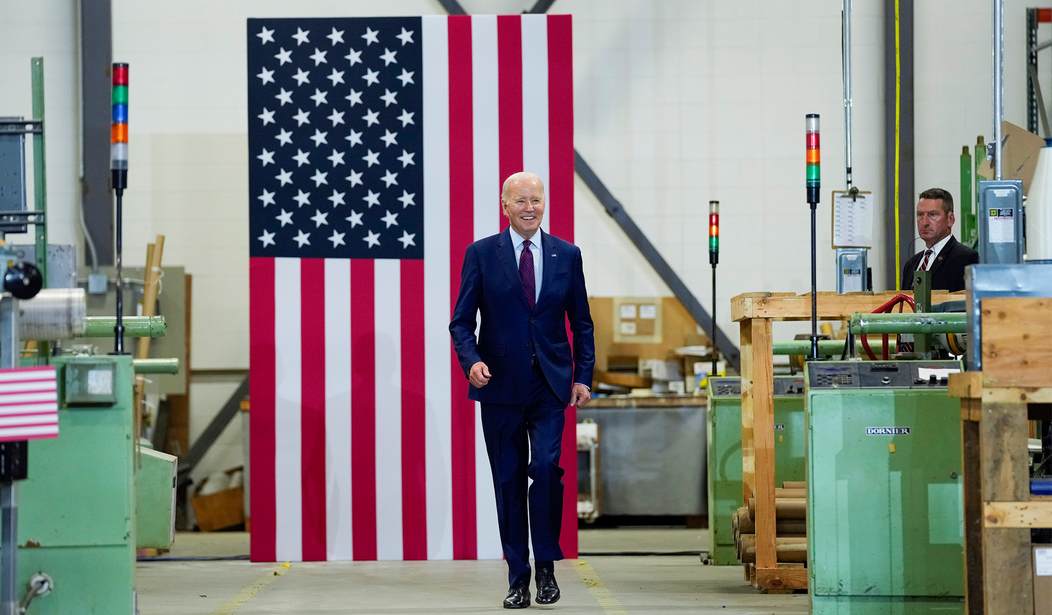The United States has an alarming dependence on technology supply chains, mainly based in mainland China. The region leads in tech exports – some 40% of the global share – and accounts for 23% of U.S. technology consumption. Suppose we learned one lesson from the supply chain snafus of the Covid era. In that case, it’s this: the most significant threat to consumer technology supply chain resiliency is dependence on a single geographical area. That’s especially true amid China’s crackdown on human rights and growing U.S.-China tensions.
In response, the Biden Administration and politicians on both aisles of Capitol Hill are tossing around ‘reshoring’ as a political talking point. President Biden has pledged to ensure that the “future is manufactured in America” and stoked anxieties about dependency on other countries. That makes for good sound bites but bad policy. Bringing all, or even most, technology manufacturing to the United States is neither feasible nor even desirable.
A recent study, commissioned by the Consumer Technology Association and conducted by Kearney, found that reshoring manufacturing of all technology products now taking place in Mainland China and the region for the U.S. market would require a direct investment of well over $500 billion. It would also require a tenfold increase in the U.S. workforce for manufacturing and indirect suppliers. Absent a radical – and politically challenging – shift in our immigration policies, it’s hard to imagine developing and training even a fraction of the needed workers, especially with already high industrial demand and a growing shortage of skilled workers.
Where does that leave us? Rather than pushing for “Made in America,” we’d benefit from embracing a ‘team approach’ of stronger trade ties with our allies and trade partners. While complete decoupling from Mainland China isn’t realistic, at least in my lifetime, diversifying and securing consumer tech supply chains with lower-cost geographies like Mexico, Vietnam, and India and doubling down on trade ties to other allied nations can help the United States wean its consumption from mainland China. There is an opportunity for limited reshoring, especially in areas like semiconductor manufacturing, where firms are making significant investments in the United States due to the CHIPS and Science Act, signed into law in 2022. With more imports from allies and trade partners and a slight increase in domestic production, the U.S. could significantly reduce reliance on imports from China.
Recommended
Businesses have already begun to pivot. In an early 2023 survey by the Chief Executive Group, more than 70% of CEOs reported launching or speeding up supply chain diversification plans based on the events of the past few years, citing ‘geopolitical risk exposure’ and ‘supply chain resilience’ as the top two drivers for the costly and challenging task of finding new partners and new plants. Ultimately, the question isn’t whether American companies will move at least some of their manufacturing and logistics; it’s how long it will take and at what cost. I think the realistic answer to the former questions is decades rather than years. The latter could lower the cost for the industry and consumers with a team-based approach to supply chain diversification.
Still, if our government is serious about reducing our reliance on China in the near term, there are policy levers to pull. To streamline the “nearshoring” and “friend-shoring” processes, the Biden Administration should focus on negotiating free trade agreements with the UK and Vietnam, which sadly have been on the back burner. It would also help to reduce trade barriers between the United States and India and fully implement and enforce the US-Mexico-Canada Agreement (USMCA) signed in 2018. While it carries political baggage, the United States should also join the Comprehensive and Progressive Agreement for Trans-Pacific Partnership (CPTPP).
This isn’t a quick fix or a cheap investment but a long-term necessity. American demand for technology products is only growing, and our reliance on supply chains that run through China is becoming increasingly risky. Act now to help businesses diversify supply chains, and we’ll ensure they remain stable for decades to come.
Gary Shapiro is president and CEO of the Consumer Technology Association (CTA)®, the trade association representing the $505 billion U.S. consumer technology industry, and a New York Times bestselling author of the book Ninja Future: Secrets to Success in the New World of Innovation.

























Join the conversation as a VIP Member